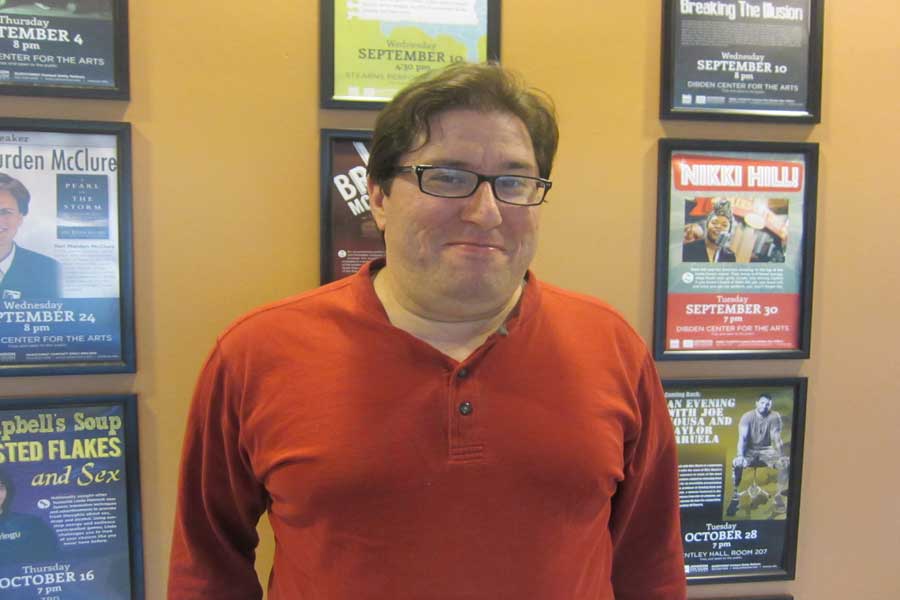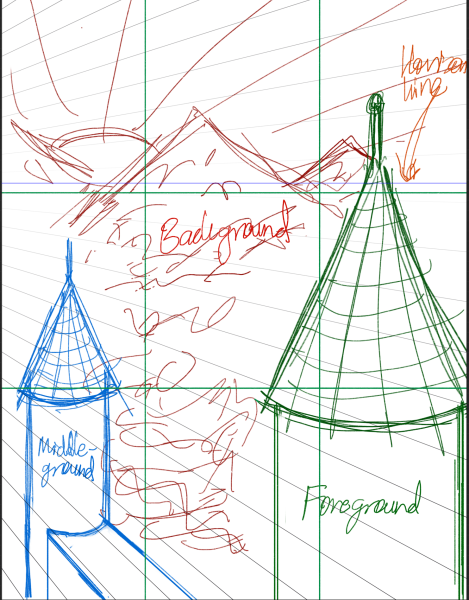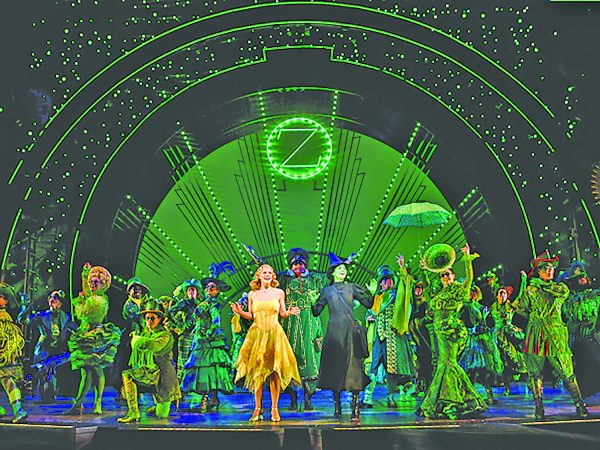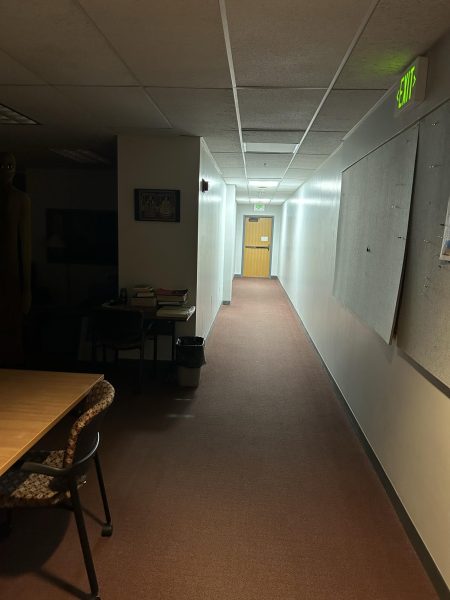Houle’s “Illusion” students work through the summer
Patrick Houle
“Breaking the Illusion” is an original play by Patrick Houle, a JSC performing arts instructor who is known to inspire his students to shove past barriers, to work and achieve far beyond what seems possible.
The play was performed three nights, Sept. 8-10. The experience of working so hard to bring it to life has given Houle appreciation and gratitude that will last much longer.
During the past year Houle found creative motivation to finish the play, which had been in the works for over five years. Last school year Houle contacted students from his improv class to read his play aloud.
The response was beyond what Houle could imagine. The students were as determined to bring the play to life as their instructor.
One of the challenges they faced was time. The only way “Breaking the Illusion” could work was if it went on stage during the first weeks of this fall semester.
“I thought that was it . . . it’s not going to work out because no one’s going to want to work on a show over the summer,” said Houle. Fortunately, he was wrong.
“They were gung-ho . . . it was a whirlwind, and they were just as passionate about this as I was . . . we went away knowing that in the course of the summer, when they were going to be busy with jobs, their own lives, doing what they wanted, that they were going to have to learn their lines on their own . . . and that when we came back it was going to be theater hell for two weeks.”
When school hit, Houle and students began working. Every single day the team was building the set, rehearsing lines, stressing out, and feeling theater excitement. “It was tough, it was difficult . . . we had a huge task, but we had so many positive, wonderful people,” said Houle.
JSC student Nick Ray was both a character in the play and the mastermind behind designing and building the set. “He was like a superman,” said Houle. “He’s a perfectionist and such a hard worker . . . the technical side . . . getting people to do that with him . . . he took that upon upon his own shoulders . . . it all came together beautifully.”
Ray’s passion is designing and building sets. “There’s an odd feeling of pride looking at a well-built set, even if it’s only going to exist for a three-day show,” he said in a Facebook interview. “Patrick . . . refuses to settle, something that everyone, but especially the theatre department, can learn from and emulate. We are a small program, with a budget that shrinks every year, but he refuses to put on a mediocre show despite the conditions we work under.”
That was the other challenge for the team: money. They didn’t have a lot of it to work with.
“Rather than complaining,” said Houle, “they got creative, and made it work.”
Josh Poland was the lighting designer, and Pat Monaghan brought the sound that Houle desired.
There were roughly 25 people who contributed to the show.
The cast included Jacob Fournier, Ali Gauthier, Sam Kilbride, Victoria Doughty, Colton White, Dakotah Senesac, Chelsea Detollenaere, Amelia Machia, Ophelia Blair, Mariah Olmstead, Shawn Weibel, Steph Zello, Nick Ray and Rachael Garnjost.
The crew consisted of Katie Finegan (stage manager), Trina Waters (assistant stage manager), Mackenzie Brown (props master), Nick Ray (set designer), Josh Poland (lighting designer), Rachael Garnjost (costume designer), Patrick Monaghan Jr. (sound designer), Michael Brokowski, Danielle Godjikian, Hannah Publicover, Samantha Drouin (stage crew) and Ben Cousino (light board operator).
“The show was definitely a sight to see!” said JSC student Jonathan Howard. Howard attended all 3 performances. “The set was beautifully designed and simple. The actors did a wonderful job on all three days . . The show as an ensemble worked incredibly.”
Howard did note that at times the swearing seemed excessive and unrealistic in conversation.
Rahael Garnjost costumed the play, while memorizing lines for her character. Garnjost has been doing theater since elementary school and costume design since high school.
“I really love that creating of something, and being a part of a group of people who are creating something,” said Garnjost. “I don’t want to be in movies. I want to be on the stage. I think it’s a little more beautiful. You don’t get to call cut and start over, but also, it’s kind of a one-time thing. It’s different every time you do it. It’s like a gift you’re giving to the audience, and it’s there for a limited time.
“I feel we helped create what [Houle] was looking for . . . and helped him understand what he was doing. When you create something and you’ve never seen it done, there is that moment of trying to wrap your head around how this is going to work in real life. I feel honored actually, to be part of that process of allowing his play to come to fruition.”
Houle said he was working with the perfect team for his piece. “I had no thoughts at all of performing this this semester,” said Houle. “It was all them, they were the inspiration, the muse, they were everything to get this up. I am forever grateful to them.”
In Houle’s words, “’Breaking the Illusion’ is almost a metaplay . . . it ends up being about a writer who is attempting to regain control of her creation after one character becomes aware and starts behaving like a real human being.”
The disobedient character tears a hole that gets bigger and bigger throughout the play.
“[It] threatens to suck in this whole universe, and the writer essentially wants to get this character to put his life back into her hands. And the writer uses all these other characters to do this . . . it’s kind of almost ‘Twilight Zone’-like,” said Houle.
At its core, “Breaking the Illusion” deals with the universal desire to be loved, the questions of how to deal with grief, and the idea that humans only have the illusion of control.
Recordings of the play can be watched on ustream.tv.
Travis LeClair joined the Basement Medicine staff in Spring 2014, assuming the position of staff reporter.






